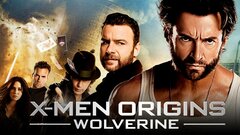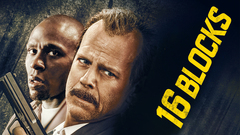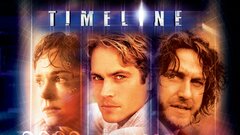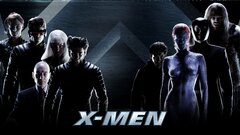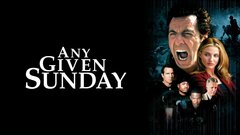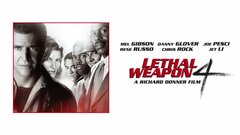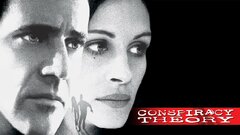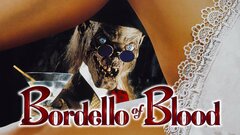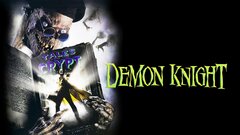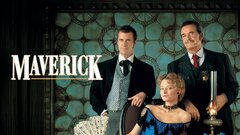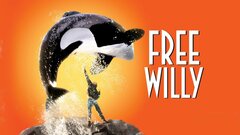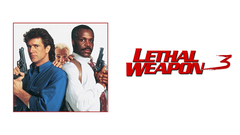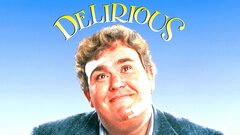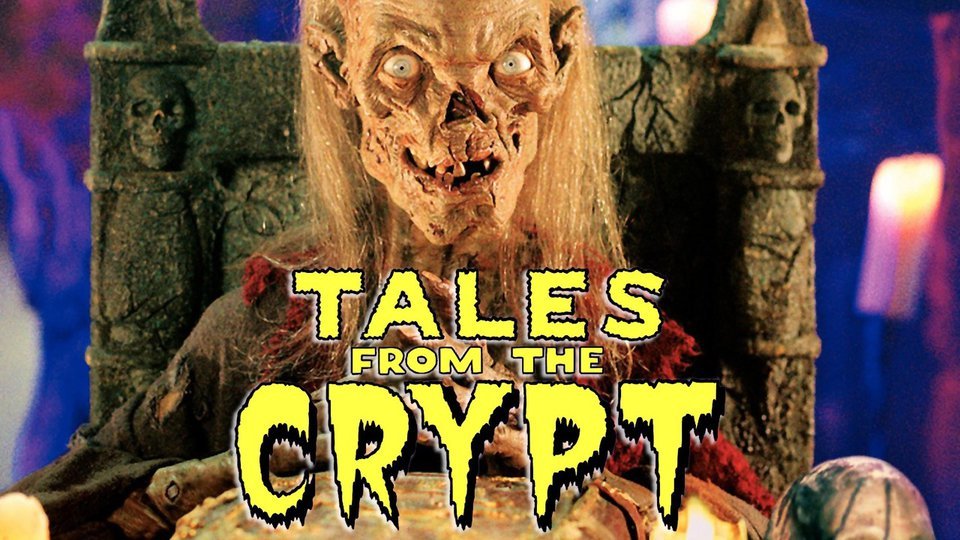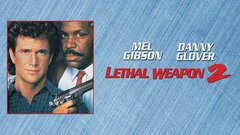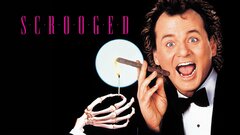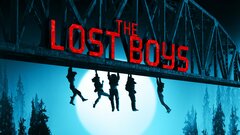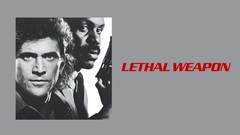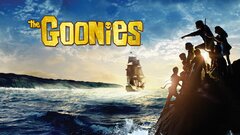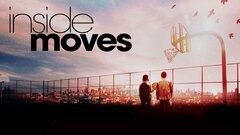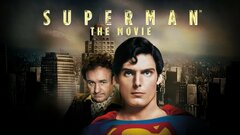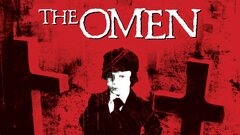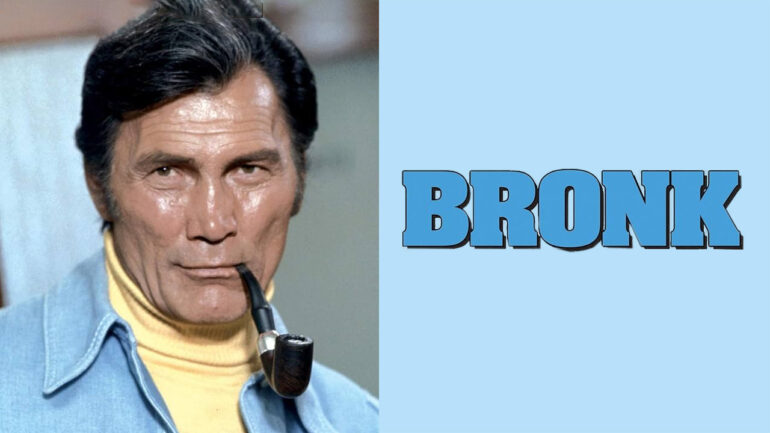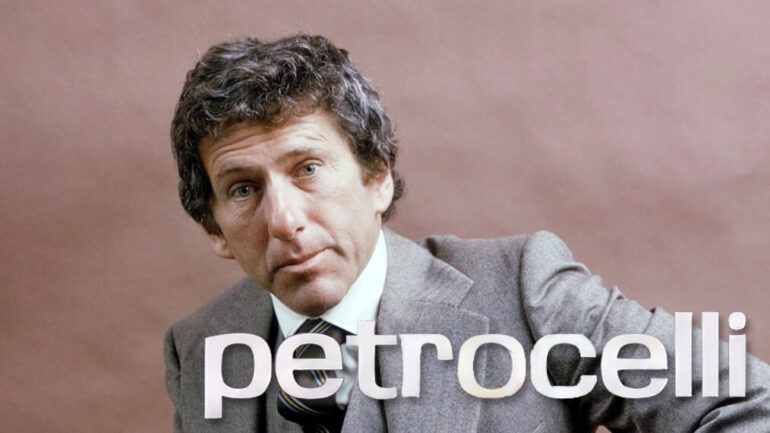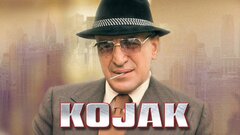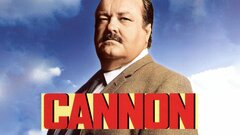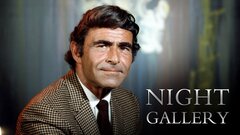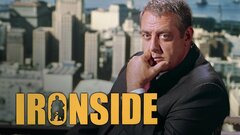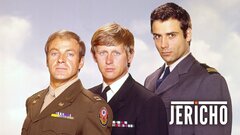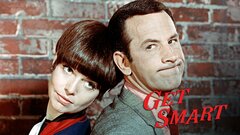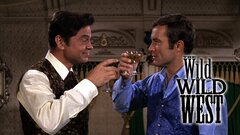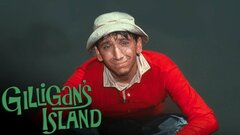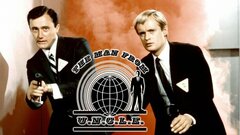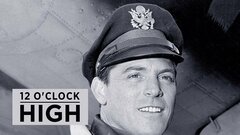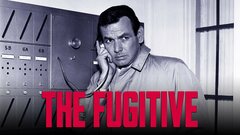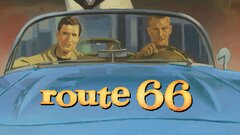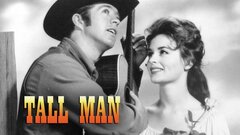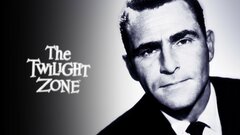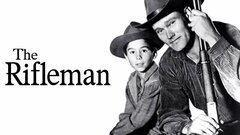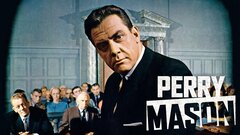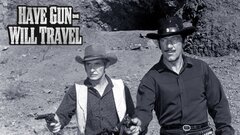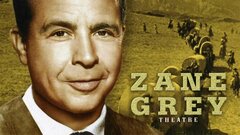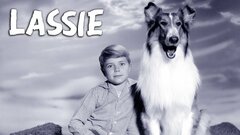A former off-Broadway actor who began directing commercials and industrial films in the late 1950s, Richard Donner went on to become one of the top-grossing directors in the 1970s and 1980s before tapering off later in his career. After directing numerous episodes of top shows like "The Twilight Zone" (CBS, 1959-1964), "The Man from U.N.C.L.E." (NBC, 1964-68) and "Kojak" (CBS, 1973-78), Donner achieved critical and commercial success with his genre-defining horror movie, "The Omen" (1976), widely considered to be the best of its kind. He followed up with the epic "Superman: The Movie" (1978), which, after a difficult production that resulted in his firing while shooting "Superman II" (1980), became a huge box office hit while setting the bar for all other comic book-based movies to follow.
After a few critical and financial flops like "Inside Moves" (1980) and "The Toy" (1982), Donner directed the cult favorite adventure, "The Goonies" (1985), before breaking the mold again - this time in the buddy action genre - with "Lethal Weapon" (1987), which spawned three sequels over the next decade. Throughout his career, Donner remained a true original that fans and colleagues held in high regard.
Born on April 24, 1930 in The Bronx, NY, Donner was raised in nearby Mount Vernon by his father, Fred, a furniture manufacturing businessman, and his mother, Hattie. After attending Parker Junior College, he moved on to New York University, where he studied business before making the switch to theater. He began his acting career soon after, appearing in off-Broadway productions and on various television projects. His life changed, however, after working on director Martin Ritt's television adaptation of W. Somerset Maugham's "Of Human Bondage" (1951).
Ritt told Donner that though he had trouble taking direction, he had a talent for giving it. So the director hired the young actor as his assistant. This led to a series of jobs that paved the way toward meeting his mentor, director George Blake, who hired Donner to drive him around after suffering a heart attack. The two traveled the country together making documentaries and commercials, until Blake allowed Donner to begin directing his own.
Donner soon made his debut as a television director with an episode of "Wanted: Dead or Alive" (CBS, 1958-1961), starring Steve McQueen, and worked steadily on the small screen throughout the remainder of the decade and on into the next. He made his feature film debut with the little-known "X-15" (1961), a flag-waving drama about three test pilots (including Charles Bronson) who devote their lives flying experimental aircraft. Returning to television, Donner helmed episodes for some of the biggest series of the day, including "The Twilight Zone" (CBS, 1959-1964), "The Fugitive" (ABC, 1963-67), "Gilligan's Island" (CBS, 1964-67) and "The Man from U.N.C.L.E." (NBC, 1964-68).
Toward the end of the decade, he directed his next feature, "Salt & Pepper" (1968), a slapstick spy comedy starring Sammy Davis, Jr. and Peter Lawford, which he followed the next year with "Twinky" (1969), a romantic drama about the difficulties of marriage that reunited him with star Charles Bronson. Donner made another return to television, turning in episodes of "Ironside" (NBC, 1967-1975), "The Streets of San Francisco" (ABC, 1972-77), "Kojak" (CBS, 1973-78) and "The Six Million Dollar Man" (ABC, 1974-78).
After toiling away virtually unknown by the general public, Donner finally scored his first commercial and critical hit with "The Omen" (1976), considered by many to be one of the best horror movies ever made. The film followed the path of Damien Thorn (Harvey Stephens), a five-year-old boy switched after the wife (Lee Remick) of a U.S. ambassador (Gregory Peck) has a stillborn baby, only to discover through a series of strange and violent events that their new son is the spawn of Satan. Made for less than $3 million, "The Omen" went on to rake in over $60 million at the box office, making it a huge commercial success. Meanwhile, critics praised the film's daring and special effects, particularly with its infamous slow-motion decapitation scene. Donner built on his success with "Superman: The Movie" (1978), which reinvigorated long-dormant comic book movies, much like "The Omen" sparked a revived interest in horror.
In development since 1974, producers Ilya and Alexander Salkind grappled with numerous obstacles: a 500-plus page script from Mario Puzo, an endless search for a director before settling on a post "Omen" Donner, and an exhaustive search for the right lead actor, which included everyone under the sun - Robert Redford, Burt Reynolds, Clint Eastwood, Nick Nolte, James Caan, Charles Bronson and Kurt Russell, among many others. Once Donner was aboard, the Salkinds settled on the then-unknown Christopher Reeve, who was able to both act and believably embody the character. They also picked Margot Kidder as Lois Lane, Gene Hackman as Lex Luthor, Marlon Brando - at a hefty $3 million price tag - as Jor-El, and Ned Beatty as his bumbling sidekick, Otis.
Dealing with his first bona fide special effects movie, Donner insisted on absolute realism from his technicians. He even posted signs with the word 'verisimilitude' above the door in every room of the technical department, with the idea that their work should convince him that he was really watching a man flying around the fictional Metropolis. If Donner felt that he did not believe what he saw onscreen, he sent his special effects team back to try again - something that happened repeatedly in the famous - and often derided - scene with Superman flying above Metropolis with Lois Lane.
Meanwhile, Donner ran afoul with the Salkinds because of budget and scheduling; at the time, they were filming both the original and the sequel "Superman II" (1980) simultaneously, which of course led to cost overruns, production delays and numerous fights between director and producers, which ended with Donner barring them from the set - and his eventual firing. Once "Superman" was in the can, the Salkinds put a halt to the filming of its sequel, even though Donner had completed around 70 percent of the shoot. Eventually, they finished shooting the second film with director Richard Lester of "A Hard Day's Night" (1964) fame at the wheel. Lester reshot much of Donner's footage in order to receive sole credit.
Meanwhile, "Superman" went on to become a huge success, raking in over $130 million at the box office - an enormous sum at the time - while earning the respect of critics and fans alike for its believable, sensitive and exciting take on the famous DC Comics superhero.
Though he had achieved the difficult task of creating a box office hit that also resonated with critics, Donner was still stung by his contentious dealings with the Salkinds. He sought to put his troubles behind him with a more low-key movie, "Inside Moves" (1980), a tragic-comedy about a man (John Savage) who becomes paralyzed after a failed suicide attempt and befriends another disabled man (David Morse). The well-meaning, but flawed movie was a flop at the box office.
He next directed "The Toy" (1982), a failed comedy that starred Richard Pryor as a man hired by a billionaire (Jackie Gleason) to take care of his bratty son (Scott Schwartz). Donner had a much more positive experience with the fantasy-adventure film "Ladyhawke" (1985), sharing producing duties with his future wife Lauren Shuler, while crafting a well-received medieval tale about a petty thief (Matthew Broderick) trying to help reunite two doomed lovers (Michelle Pfeiffer and Rutger Hauer) under the spell of an evil bishop (John Wood).
He next directed and co-produced the teen hit "The Goonies" (1985) with Steven Spielberg, a comedic adventure that followed a group of misfit kids who embark on a treasure hunt after finding a map leading to a pirate's bounty. Though not the biggest critical or financial success of his career, "The Goonies" did generate a cult following that kept the movie at the forefront of Donner's finer achievements.
Donner once again redefined a genre - this time the buddy action movie - with the groundbreaking "Lethal Weapon" (1987), written by talented scribe Shane Black. The film starred Danny Glover as the aging Det. Roger Murtaugh and Mel Gibson as the suicidal loose cannon Det. Martin Riggs, both of whom form an uneasy partnership while trying to find who killed the daughter of Murtaugh's old war buddy (Tom Atkins). Attracted by Black's script, which defied typical action conventions to focus on the arc of a dark character finding the light, Donner helmed a movie that started one of the most successful film franchises of its day.
He followed up with "Scrooged" (1988), a contemporary telling of Charles Dickens' A Christmas Carol starring Bill Murray as a selfish television executive who is shown the evil of his ways by three unnerving ghosts (including Carol Kane and David Johansen). The film went on to enjoy fair success at the box office, followed by a long life on various cable networks. Meanwhile, he directed the obvious sequel, "Lethal Weapon 2" (1989), which proved to be more cartoonish than the original. But it also proved to be a giant success, paving the way for more sequels in the near future.
Meanwhile, Donner returned to television as an executive producer and sometime director of the HBO series "Tales From the Crypt" (1989-91). In 1990, Donner took over the direction of the hotly bid-upon project "Radio Flyer" (1992) for a reportedly record fee of $5 million, replacing fired screenwriter and first-time director David Mickey Evans. This odd film - half sentimental journey; half an exploration of child abuse - flopped commercially and raised critical hackles for its questionable notion that living in fantasy alone is enough for abused kids.
That same year, he went back to the well for the even more cartoonish "Lethal Weapon 3" (1992), which again was a big box office hit despite diminishing returns from critics. While his production company, Donner/Shuler-Donner Productions, was responsible for a growing list of films, including the family hit "Free Willy" (1993) and its sequels "Free Willy 2: The Adventure Home" (1995) and "Free Willy 3: The Rescue" (1997), Donner directed the big screen adaptation of a television classic, "Maverick" (1994). The action comedy starred Mel Gibson as the titular rogue, Jodie Foster as a well-disguised con-artist, and James Garner - the original Bret Maverick on television - as a legendary lawman. Fun, breezy and full of laughs, "Maverick" was easily one of Donner's more enjoyable romps.
While producing two predictable spin-offs from the HBO "Crypt" series, "Tales from the Crypt Presents Demon Knight" (1995) and "Tales from the Crypt Presents: Bordello of Blood" (1996), Donner returned to the director's chair for "Assassins" (1995), an action adventure yarn about two top assassins (Sylvester Stallone and Antonio Banderas) going after each other that was a flop with critics and audiences. Donner tried to bounce back with "Conspiracy Theory" (1997), which starred Mel Gibson as a crackpot New York cab driver who stumbles upon a plot that is actually real while seeking the help of a Justice Department employee (Julia Roberts). Though the film contained an interesting hook and good performance from Gibson, the plot itself rang hollow amidst the manic ramblings of its protagonist.
Meanwhile, Donner, Gibson and Glover teamed up for the fourth and final time with "Lethal Weapon 4" (1998), which reunited old friends while trying to add fresh blood with a sharp-tongued Chris Rock playing a brash young detective. Despite a been-there, done-that vibe throughout, the fourth installment held up its financial end with a $140 million take at the box office.
Though he and his wife inked an exclusive first-look deal with NBC in 2000, Donner was fairly inactive as a director over the next five years. He was the executive producer on projects like "Any Given Sunday" (1999) and "X-Men" (2000) before finally stepping behind the camera again for "Timeline" (2003), an underwhelming adaptation of Michael Crichton's time travel novel about a group of Yale students (Paul Walker, Frances O'Connor and Ethan Embry) who mysteriously transport to the 14th century after their professor (Gerard Butler) suddenly goes missing while studying a medieval site. Following a critical drubbing, Donner's pedestrian sci-fi fantasy fared poorly at the box office.
After serving as executive producer on the supernatural thriller, "Constantine" (2005), Donner returned to the director's chair with "16 Blocks" (2006), a B-level thriller about a hard-drinking cop (Bruce Willis) escorting a criminal (Mos Def) to a grand jury hearing, only to run into a group of bad cops who try to stop the testimony. "16 Blocks" fared better than his previous effort, both critically and at the box office, but Donner's old form remained elusive. Meanwhile, to the delight of fanboys and girls everywhere he released "Superman II: The Richard Donner Cut" (2006) on DVD, which contained many never-seen scenes from the original shoot before he was fired.
He next was the executive producer on "X-Men Origins: Wolverine" (2009), a prequel that featured the clawed mutant (Hugh Jackman), and followed that by celebrating the 25th anniversary of "The Goonies" release with a cast reunion and fan event in Oregon where the film was shot.
Richard Donner died on July 5, 2021 at the age of 91.









